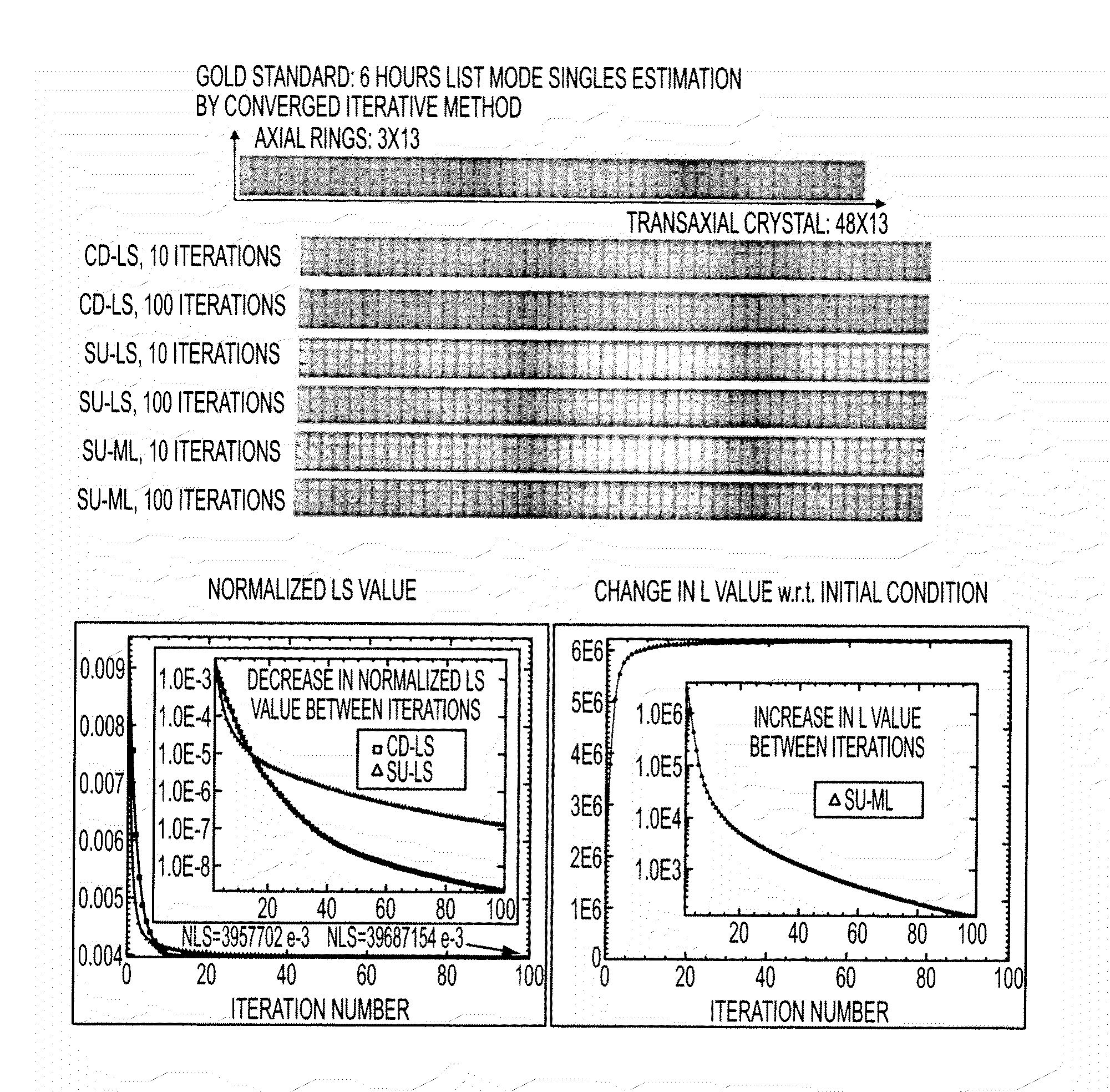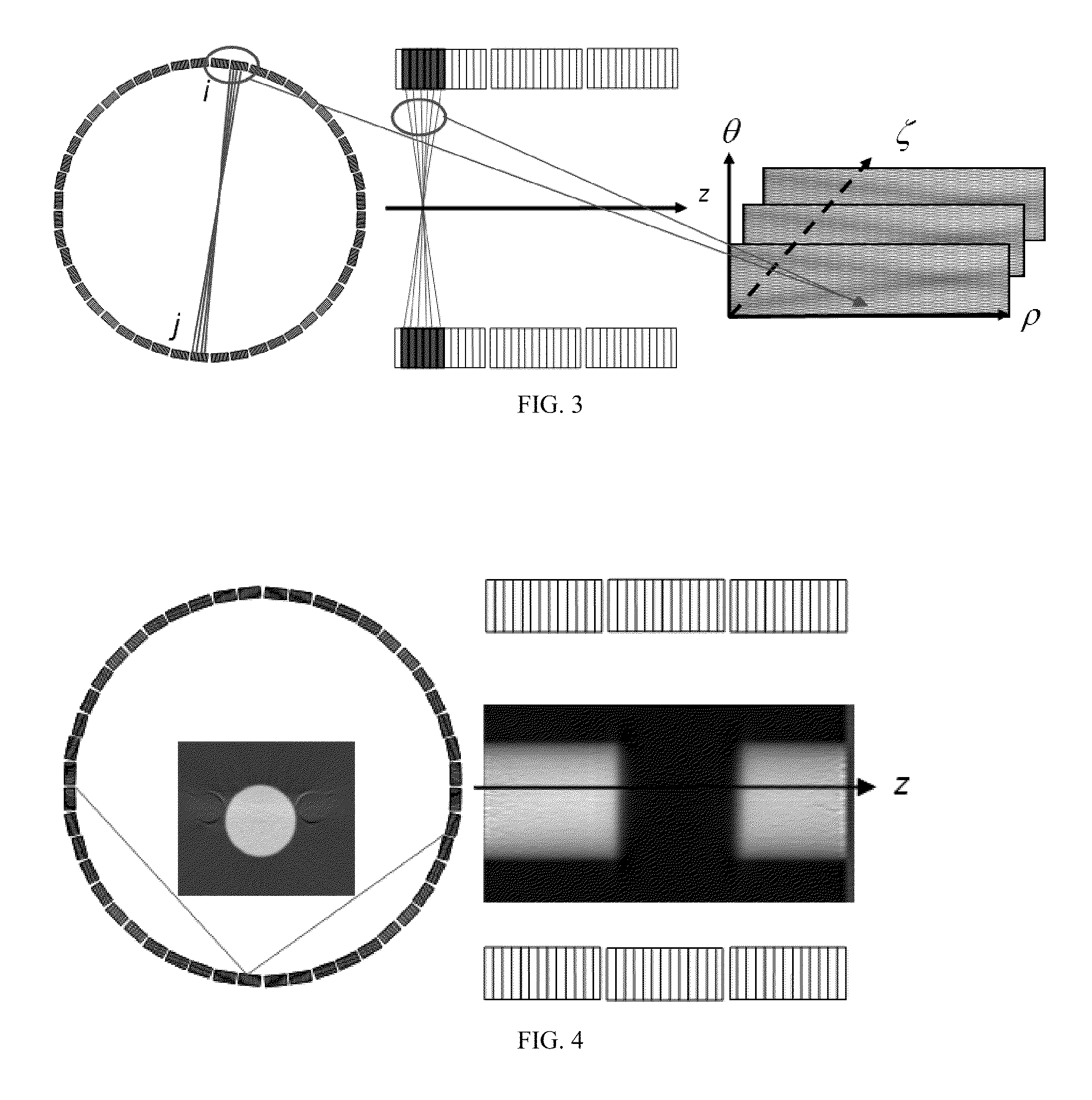Iterative Algorithms for Variance Reduction on Compressed Sinogram Random Coincidences in PET
- Summary
- Abstract
- Description
- Claims
- Application Information
AI Technical Summary
Benefits of technology
Problems solved by technology
Method used
Image
Examples
Embodiment Construction
Data Compression and Objective Functions
[0025]Assuming that LOR random data rij is Poisson variable, the basic random equation for mean value of compressed data is
r_ρ,θ,ζ=12∑i,jr_ij=12∑i,jωρθζ,ijsisj.(2)
[0026]Measured data rρθζ is Poisson variable too. Data are parameterized by ρ,θ,ζ, where ρ is the radial index, θ is the azimuthal index, and ζ is the axial plane index (including oblique and direct planes). r and s are counts, rather than rates, and are measured and estimated for a given time frame. ω is the ij LOR contribution factor:
ωρθζ,ij={1,ifijcontributetosinogrambin(ρ,θ,ζ)0,otherwise.(3)
[0027]A factor of ½ in (2) is due to the double summation over crystal indices.
[0028]The Least Squares objective function may be minimized to diminish differences between measured data and the modeled mean of random data:
LS=∑ρ,θ,ζ(rρθζ-r_ρθζ)2.(4)
[0029]Since random data are typically uniform in appearance we consider the non-weighted Least Squares objective function. Nevertheless, the weights ...
PUM
 Login to View More
Login to View More Abstract
Description
Claims
Application Information
 Login to View More
Login to View More - R&D
- Intellectual Property
- Life Sciences
- Materials
- Tech Scout
- Unparalleled Data Quality
- Higher Quality Content
- 60% Fewer Hallucinations
Browse by: Latest US Patents, China's latest patents, Technical Efficacy Thesaurus, Application Domain, Technology Topic, Popular Technical Reports.
© 2025 PatSnap. All rights reserved.Legal|Privacy policy|Modern Slavery Act Transparency Statement|Sitemap|About US| Contact US: help@patsnap.com



